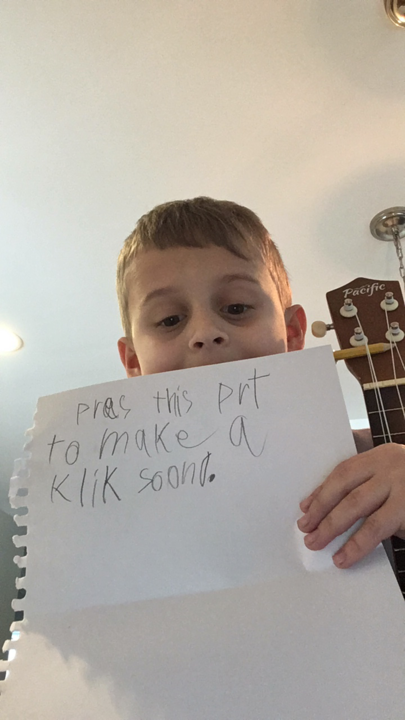Teach us about an instrument you play
Build a simple cardboard guitar, explore how strings produce sound, learn basic chords, and play a short tune to demonstrate what you learned.



Step-by-step guide to build a cardboard guitar, explore how strings produce sound, and play a short tune
How to Play Piano: Day 1 - EASY First Lesson for Beginners
Step 1
Gather all the materials and set them on a clear workspace.
Step 2
Trace a simple guitar body shape onto the cardboard using the pencil and ruler.
Step 3
Cut out the traced guitar body from the cardboard with scissors.
Step 4
Tape the paper towel tube or craft stick to the top of the body to make the neck.
Step 5
Attach the bottle cap or a folded piece of cardboard near the bottom and tape it down to act as the bridge.
Step 6
Stretch three or more rubber bands across the body over the bridge and hook them around the neck so they act as strings.
Step 7
Tighten or loosen each rubber band on the neck to change its tension and tune the strings a little.
Step 8
Pluck each rubber band one at a time and listen to how each one sounds.
Step 9
Use the pencil to mark three fret positions along the strings: one near the neck about 2 cm from the top, one in the middle, and one nearer the bridge.
Step 10
Press all the rubber bands down at the first marked position.
Step 11
Strum all the strings once while holding them at the first position to hear Chord 1.
Step 12
Press all the rubber bands down at the second marked position.
Step 13
Strum all the strings once while holding them at the second position to hear Chord 2.
Step 14
Play a short tune by strumming this pattern twice: open strings then Chord 1 then open strings then Chord 2.
Step 15
Share your finished cardboard guitar and what you learned on DIY.org.
Final steps
You're almost there! Complete all the steps, bring your creation to life, post it, and conquer the challenge!


Help!?
What can we use if we don't have a paper towel tube, bottle cap, or rubber bands?
Use a wooden craft stick or a tightly rolled piece of cardboard taped to the body for the neck, a folded piece of cardboard or a small block glued/taped near the bottom as the bridge, and substitute hair ties or stretchy balloon strips for the strings.
My rubber bands keep slipping or the neck is wobbly—how do we fix that?
Firmly tape the paper towel tube or craft stick to the cardboard body with several layers of tape, anchor the bottle cap or folded cardboard bridge with extra tape, and wrap a short piece of tape or an extra rubber band around the neck end before hooking the strings to stop slipping.
How can we adapt this cardboard guitar activity for different ages?
For preschoolers, pre-trace and pre-cut the guitar body and help stretch the rubber bands, while older kids can use the ruler to mark the three fret positions at about 2 cm, experiment with more strings, and tune by tightening or loosening each band.
How can we enhance or personalize our finished cardboard guitar?
Decorate the cardboard body with markers or stickers, try different bridge materials (bottle cap versus folded cardboard) to change the sound, add more strings for richer chords, and record your short tune to share on DIY.org as the instructions suggest.
Watch videos on how to build a cardboard guitar, learn basic chords, and play a short tune
7 Days To Learning Piano (Beginner Lesson)
Facts about string instruments for kids
🎶 A plucked string vibrates; the vibration frequency (pitch) goes up when the string is shorter or tighter.
📦 A simple cardboard soundbox can amplify string vibrations surprisingly well — that’s why homemade guitars work!
🎵 Just three chords (the I–IV–V family) can play hundreds of songs — try C, F and G or G, C and D to start.
🎸 Most modern guitars have 6 strings, but some have 7, 8 or even 12 strings for extra range and texture.
🔬 Touching a string lightly at certain points creates harmonics — bell-like higher notes you can hear near the 12th fret.
How do I build a simple cardboard guitar and use it to learn chords and play a short tune?
What materials do I need to make a cardboard guitar for this activity?
What ages is building and playing a cardboard guitar suitable for?
What are the benefits of building a cardboard guitar and learning basic strings and chords?


One subscription, many ways to play and learn.
Only $6.99 after trial. No credit card required



